In today's fast-paced world, it is not uncommon to see people immersed in their own world, enjoying the sounds of their favorite music or engaging in phone conversations, while wearing headphones or headsets. However, what happens when individuals are faced with the discomfort and potential risks that come with otitis, a common ear infection?
The question arises: is it advisable to continue using headphones or should precautions be taken? This article aims to explore the potential effects of wearing headphones while dealing with otitis, shedding light on whether it is a harmless habit or poses a risk to our hearing and overall well-being.
As we all know, otitis is an inflammation of the ear that can cause pain, discomfort, and even temporary hearing loss. During such times, it is crucial to prioritize our health and take necessary precautions to expedite the healing process. It is understandable that individuals may be eager to continue using headphones, as they provide a source of entertainment, distraction, or even a means of communication. However, it is important to consider the potential consequences that wearing headphones may have on the already compromised condition of the ears.
Understanding Otitis: Causes, Symptoms, and Types
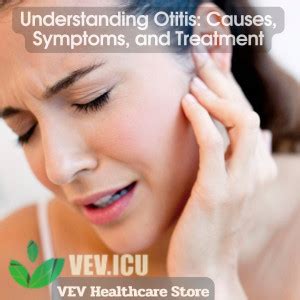
Otitis, a common ear condition, encompasses various types, each with its own set of causes and symptoms. This section aims to provide a comprehensive understanding of otitis by exploring its different forms and their distinctive characteristics.
1. Acute Otitis Media (AOM): AOM typically arises as a result of a bacterial or viral infection, most commonly following a respiratory tract infection. Symptoms may include ear pain, fever, drainage from the ear, reduced hearing, and irritability, especially in children.
2. Otitis Media with Effusion (OME): OME refers to the presence of fluid in the middle ear without any signs of infection. It often follows AOM or arises due to allergies, sinus infections, or problems with the eustachian tube. OME is characterized by muffled hearing, a sensation of fullness in the ear, and sometimes, mild discomfort.
3. Chronic Otitis Media (COM): COM is a persistent inflammation of the middle ear lasting for an extended duration, usually more than 12 weeks. It may result from repeated episodes of acute otitis media, inadequate treatment, or persistent exposure to irritants such as smoke. Common symptoms include hearing loss, ear discharge, and persistent earache.
4. Otitis Externa: Sometimes referred to as "swimmer's ear," otitis externa is an infection or inflammation of the ear canal, often caused by bacterial or fungal growth. Factors contributing to its development include excessive moisture in the ear from swimming or showering, trauma to the ear canal, or the usage of objects like cotton swabs that can damage the delicate skin lining the ear canal. Symptoms may include ear pain, itching, swelling, and drainage.
5. Chronic Suppurative Otitis Media (CSOM): CSOM is characterized by a persistent discharge of pus from the middle ear through a perforation in the eardrum. This chronic condition usually occurs as a complication of untreated or inadequately treated acute otitis media. CSOM is commonly associated with hearing loss and recurring ear infections.
Gaining knowledge about the various types of otitis, their causes, and the symptoms they present is crucial for understanding the condition and seeking appropriate medical care. Each type may require specific treatment approaches to ensure effective management and prevent complications.
The Importance of Proper Ear Care in Otitis Patients
Eardrum infections, commonly known as otitis, pose potential risks to individuals who suffer from this condition. While wearing headphones may seem like a harmless activity, it is crucial for otitis patients to prioritize proper ear care in order to prevent further complications and discomfort. This section highlights the significance of adopting and maintaining adequate ear hygiene practices for individuals with otitis.
| Benefits of Proper Ear Care |
|---|
| 1. Reduced Risk of Infection Spread: |
| Proper ear care can help minimize the chances of infection spreading to other parts of the ear or even to the other ear. It plays a vital role in containing and preventing the exacerbation of otitis symptoms. |
| 2. Quicker Recovery: |
| By adopting appropriate ear care practices, otitis patients can promote faster healing and recovery. This ensures a faster return to normal activities without experiencing prolonged discomfort. |
| 3. Decreased Discomfort: |
| Engaging in proper ear care routines can significantly reduce discomfort associated with otitis. This may include pain, itchiness, and a feeling of fullness in the ear that can be alleviated or prevented with regular care. |
| 4. Prevention of Complications: |
| Proactive ear care can help prevent potential complications that may arise from otitis, such as hearing loss or the development of chronic ear infections. It is vital for long-term ear health and overall well-being. |
Considering the importance of proper ear care in otitis patients, it is essential to establish an effective routine that adheres to recommended practices. This may include gentle cleaning methods, avoiding exposure to irritants or allergens, and seeking medical advice or treatment when necessary. By prioritizing proper ear care, individuals with otitis can optimize their healing process and minimize the risk of further complications.
Potential Risks of Using Headphones While Having Otitis
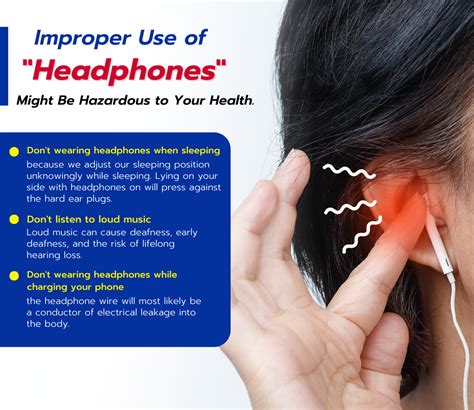
When experiencing ear inflammation or infection known as otitis, there may be potential hazards associated with using headphones. It is essential to be aware of the possible risks involved and understand how they could potentially worsen the condition.
1. Increased Discomfort: Utilizing headphones during otitis can intensify discomfort due to the direct pressure applied to the affected ear. It might lead to heightened pain levels, making the symptoms of otitis more pronounced.
2. Spread of Infection: Wearing headphones with otitis may facilitate the spread of the infection from the external auditory canal to the middle ear. Continued use of headphones can introduce additional bacteria into the ear, delaying the healing process and potentially worsening the infection.
3. Exacerbating Tinnitus: Individuals experiencing otitis might also suffer from tinnitus, a ringing or buzzing sensation in the ears. Wearing headphones can potentially exacerbate tinnitus symptoms, as the close proximity of the sound source may intensify the perception of the ringing or buzzing.
4. Interference with Treatment: If undergoing treatment for otitis, wearing headphones may interfere with the effectiveness of prescribed medications or eardrops. The headphones can prevent proper absorption of the medication, hindering the healing process and prolonging the duration of the infection.
5. Compromised Ear Hygiene: When using headphones with otitis, there is a risk of compromising ear hygiene. The accumulation of sweat, moisture, or earwax in the ear canal due to extended headphone use may create an optimal environment for bacterial growth, further complicating the condition.
It is crucial to consult with a medical professional if experiencing otitis or any ear-related issues. They can provide personalized guidance and advice on whether it is safe to use headphones during the healing process. Prioritizing the well-being of the ears and taking necessary precautions is essential to avoid potential risks and support the recovery from otitis.
Can the Use of Earphones Aggravate Otitis Symptoms?
Exacerbating the symptoms of otitis through the use of in-ear audio devices is a pertinent concern for individuals affected by this ear condition. Research suggests that the utilization of headphones might potentially amplify the discomfort associated with otitis, causing a decline in overall well-being.
Direct Influence on Inflammation: Otitis, characterized by inflammation in the ear, can be further irritated by the prolonged and continuous use of earphones. The pressure exerted by the earphones within the ear can interfere with the healing process and potentially intensify inflammation, resulting in heightened discomfort.
Microbial Accumulation: The snug fit of headphones creates an ideal environment for the accumulation of microbes and bacteria, leading to a higher risk of secondary infections. Otitis sufferers have a greater susceptibility to such infections, and the use of headphones without proper cleaning and maintenance can worsen the symptoms and delay the healing process.
Interference with Treatment: Otitis often requires medical treatment, which may involve topical medications or ear drops. The use of headphones can interfere with the application of these treatments, reducing their efficacy and prolonging the recovery period. It is crucial to prioritize the healing process and avoid actions that may hinder the effectiveness of prescribed treatments.
Discomfort and Pain Aggravation: Otitis is already associated with discomfort and pain, and wearing headphones can exacerbate these symptoms. The pressure exerted on the inflamed areas can intensify the discomfort, making it more challenging to manage the condition and impeding the recovery process.
Recommendations: To minimize the potential worsening of otitis symptoms, it is advisable to avoid or limit the use of headphones until the condition has resolved. Maintaining proper hygiene, regularly cleaning headphones, and using them at a lower volume can help mitigate the risk of exacerbating otitis symptoms. Consulting a healthcare professional is essential for personalized guidance on managing otitis while ensuring the well-being of the individual.
Tips for Using Earphones Safely when Dealing with Otitis
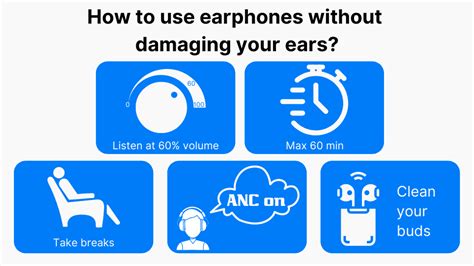
When you are experiencing ear inflammation or infection, it is crucial to take extra precautions when using earphones or similar audio devices. This section provides useful suggestions to ensure the safe use of earphones, preserving your auditory health during the time you are managing otitis.
1. Be Mindful of Volume: Adjust the volume level of your earphones to a comfortable level that is not excessively loud. High volumes put additional strain on your delicate ear structures, potentially worsening your otitis symptoms.
2. Take Regular Breaks: Continuous use of earphones can lead to prolonged pressure on your ears, which is especially detrimental when dealing with otitis. Make sure to take frequent breaks to give your ears some relief and a chance to recover.
3. Clean and Disinfect: Regularly clean and disinfect your earphones to eliminate any accumulated bacteria or germs. Use a gentle cleaning solution or specialized wipes to avoid further irritation to your ears.
4. Use Over-Ear Headphones: Consider switching to over-ear headphones instead of in-ear earphones. Over-ear headphones provide a more spacious and comfortable listening experience without directly contacting your inflamed ear canal.
5. Limit Length of Use: Reduce the overall duration of your earphone usage to minimize the strain on your ears. Set a time limit for yourself and stick to it, giving your ears ample time to rest and heal.
6. Avoid Sharing Earphones: Sharing your earphones can increase the risk of spreading bacteria or germs, which may worsen your otitis. Keep your earphones personal and avoid lending them to others until your condition has resolved.
7. Consult with a Medical Professional: If your otitis symptoms persist or worsen, seek medical advice from a healthcare professional. They can provide specific recommendations tailored to your condition and advice on using earphones safely during the healing process.
By following these guidelines, you can enjoy audio entertainment while prioritizing the health and well-being of your ears during the presence of otitis.
Recommended Types of Headphones for Individuals with Otitis
For those with inflammation or infection of the ear, it is important to consider the type of headphones that are most suitable for use. Certain headphones may be more comfortable and less likely to aggravate the condition, allowing individuals with otitis to continue enjoying their favorite audio content without causing further discomfort or complications.
When selecting headphones for individuals with otitis, it is crucial to prioritize several key factors. Firstly, headphones with adjustable and cushioned headbands can provide a customizable fit that minimizes pressure on the affected area. This can alleviate discomfort and reduce the risk of exacerbating the ear condition.
Additionally, opting for headphones that offer superior noise isolation can help mitigate the need to increase the volume excessively, which can potentially worsen the symptoms of otitis. Noise isolating headphones effectively block out external noise, allowing users to enjoy their audio content at lower volumes without sacrificing sound quality.
Another important consideration is the choice of earpad materials. Headphones with soft and hypoallergenic earpads can reduce irritation and sensitivity, which is particularly beneficial for individuals with otitis. Seek out headphones made from materials such as memory foam or breathable fabric to ensure maximum comfort.
Furthermore, wireless headphones can provide added convenience for otitis patients. The absence of cords and cables reduces the risk of accidental tugging or pulling on the ears, thus avoiding unnecessary discomfort. Wireless options also allow for more freedom of movement, which can be especially beneficial during activities that require increased mobility.
In conclusion, individuals with otitis should choose headphones that prioritize comfort, adjustability, noise isolation, hypoallergenic materials, and wireless capabilities. By selecting the appropriate headphones, individuals with otitis can enjoy their audio content safely and without exacerbating their condition.
Properly Cleaning your Headphones to Prevent Infections
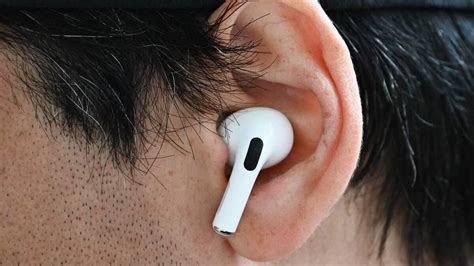
In this section, we will discuss the essential steps for maintaining the hygiene of your headphones and preventing the risk of infections. Regular cleaning of your headphones is crucial to ensure a safe and healthy listening experience.
Step 1: Start by disconnecting your headphones from any electronic devices and remove any detachable parts, such as ear pads or ear tips. This allows for better access during the cleaning process.
Step 2: Use a soft, lint-free cloth or cotton swabs slightly dampened with a mild cleaning solution to gently wipe the surface of your headphones. Be careful to avoid excessive moisture, as it may damage the electronic components.
Step 3: Pay special attention to the areas that come into direct contact with your ears, such as the ear cups or ear tips. These areas are more prone to accumulating sweat, dirt, and bacteria, which can increase the risk of infections.
Step 4: If your headphones have detachable parts, such as ear pads or ear tips, clean them separately according to the manufacturer's instructions. It is important to regularly replace these parts to maintain their effectiveness and prevent the buildup of harmful bacteria.
Step 5: Allow your headphones to air dry completely before reassembling them and using them again. Avoid using heat sources or direct sunlight to accelerate the drying process, as these may cause damage to the materials.
Step 6: Establish a regular cleaning routine for your headphones. Depending on usage frequency, it is recommended to clean them at least once every few weeks or more frequently if you sweat heavily or use them during physical activity.
By following these simple cleaning steps, you can maintain the cleanliness and hygiene of your headphones, reducing the risk of infections and ensuring a pleasant listening experience.
Alternatives for Otitis Patients: Exploring Other Options
When dealing with the discomfort of otitis, it can be challenging to find suitable solutions that provide the same level of enjoyment as wearing headphones. However, there are various alternatives available for individuals with otitis, allowing them to continue enjoying their favorite audio content without risking further complications or discomfort.
1. Wireless Speakers: Instead of using headphones directly on the ears, opting for wireless speakers can be a viable alternative. By placing the speakers near the individual, they can still enjoy their favorite music, podcasts, or audiobooks without any physical contact with their ears.
2. Bone Conduction Technology: For individuals with otitis, bone conduction technology can be an excellent alternative. This innovative technology transmits sound vibrations through the bones of the skull, bypassing the outer and middle ear. This way, individuals can listen to audio content without placing anything on or in their ears, reducing the risk of discomfort or aggravation of their condition.
3. Noise-Canceling Speakers: Another alternative is to invest in noise-canceling speakers or soundproof systems. These can help create an environment with reduced background noise, enabling individuals with otitis to enjoy their audio content at lower volumes while still experiencing high audio quality.
4. Open-Back Headphones: Open-back headphones are designed to have perforated ear cups, allowing for some amount of ambient sound to enter the ear. This type of headphone can be a suitable option for individuals with otitis, as it minimizes the risk of ear canal blockage and provides a more natural listening experience.
5. Padded Speakers: Adding padding to the headband or ear cups of headphones can help individuals with otitis experience increased comfort. The padding provides a soft barrier between the headphones and the affected ear, reducing pressure and potential pain caused by prolonged headphone use.
It is important to note that while these alternatives may offer relief for individuals with otitis, it is always advisable to consult with a healthcare professional. They can provide personalized recommendations and guidance based on the severity and specific characteristics of the individual's condition.
Advice from Medical Professionals on the Use of Headphones in Otitis Cases
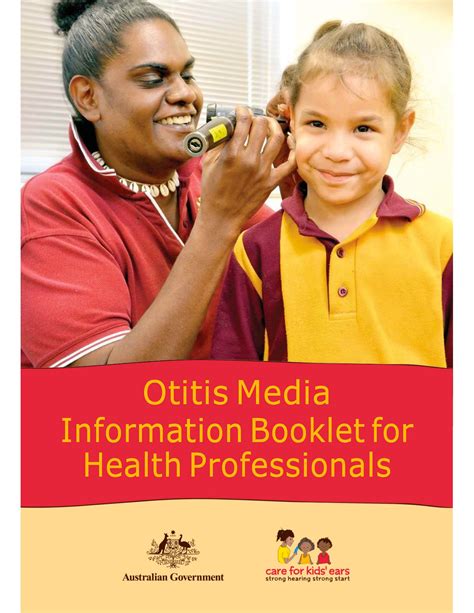
When it comes to individuals experiencing ear inflammation, it is essential to seek guidance from medical experts concerning the safe and appropriate usage of headphones. Professionals in the field emphasize the importance of adhering to specific recommendations to avoid exacerbating the condition.
Consultation with a medical professional: The first step in determining whether it is safe to use headphones while experiencing otitis or ear inflammation is to consult a medical professional. A healthcare provider specializing in ear conditions can assess the severity of the inflammation and provide personalized advice on headphone usage.
Establishing an individualized approach: Each case of otitis is unique, and it is crucial to consider the individual circumstances, including the severity and type of inflammation, before making any assumptions about headphone usage. Medical professionals will take into account factors such as the symptoms, medical history, and overall health of the patient.
Limiting exposure and adjustment: In cases where using headphones is permissible, medical professionals may advise individuals to limit their exposure to loud noises by reducing the volume or duration of headphone usage. Additionally, they may recommend using over-ear headphones instead of earbuds, as they distribute sound more evenly and reduce the risk of causing further irritation.
Hygiene and cleanliness: Regardless of whether headphones are used, maintaining proper hygiene and cleanliness is essential in managing otitis. Medical professionals may advise individuals with ear inflammation to clean their headphones regularly to minimize the risk of bacterial or fungal infections.
Monitoring and seeking prompt medical attention: It is imperative for individuals with otitis who choose to use headphones to pay close attention to any changes in symptoms. If any discomfort, worsening of inflammation, or new symptoms arise, it is crucial to seek immediate medical attention to avoid potential complications.
Disclaimer: The advice provided in this section is general in nature and should not replace professional medical consultation. Each individual case may require a tailored approach, and it is essential to consult with a healthcare provider for personalized guidance.
Taking Precautions: Balancing Entertainment with Ear Health
Ensuring the well-being of our ears while indulging in audio entertainment is of utmost importance. In this section, we will explore various precautions one can take to maintain a healthy balance between enjoying headphones and preserving ear health.
Prioritizing Ear Health: It is essential to prioritize the health of our ears over our desire for continuous audio stimulation. This means being aware of the potential risks involved in excessive headphone usage and taking necessary precautions to avoid any further harm.
Monitoring Volume Levels: One crucial aspect to consider is the volume at which we listen to audio through headphones. Continuously listening at high volumes can lead to damage to the delicate structures within the ear, potentially exacerbating any existing ear conditions, such as otitis. It is vital to keep volume levels at a safe and comfortable level to avoid any potential complications.
Taking Breaks: Continuous and prolonged use of headphones can put excessive strain on the ears. Taking periodic breaks during long sessions of headphone usage can provide much-needed rest to the ears, allowing them to recover from any potential stress. It is recommended to take short breaks every hour or so to alleviate any strain placed on the ears.
Choosing the Right Headphones: Opting for headphones specifically designed with ear health in mind can make a significant difference. Look for headphones that provide adequate noise cancellation, as this can help reduce the need to increase volume levels. Additionally, consider using headphones that do not directly insert into the ear canal to minimize the risk of further irritation or infection in cases of otitis.
Keeping Headphones Clean: Maintaining proper hygiene and cleanliness of headphones is crucial to minimize the risk of introducing any bacteria or infection to the ears. Regularly cleaning headphone pads and surfaces using appropriate cleaning methods can help prevent the accumulation of dirt, sweat, or other potential irritants.
Consulting a healthcare professional: If you have been diagnosed with otitis or any other ear condition, it is essential to consult a healthcare professional before using headphones. They can provide tailored advice and guidelines based on your specific situation, ensuring that you can still enjoy audio entertainment without compromising your ear health.
In conclusion, while indulging in audio entertainment, it is crucial to strike a balance between enjoying headphones and taking necessary precautions to safeguard our ear health. By prioritizing ear health, monitoring volume levels, taking breaks, choosing the right headphones, keeping them clean, and seeking professional advice when necessary, we can maintain a healthy equilibrium between entertainment and ear well-being.
FAQ
Can I wear headphones if I have otitis?
If you have otitis, it is generally recommended to avoid wearing headphones until the infection has cleared up. Wearing headphones can potentially aggravate the condition and prolong your recovery time.
What are the risks of wearing headphones with otitis?
Wearing headphones with otitis can increase the risk of complications and worsen the symptoms. The pressure applied by the headphones on the ear can cause pain, further inflammation, and potentially even damage to the eardrum.
Can I use earbuds instead of headphones if I have otitis?
It is generally not recommended to use earbuds if you have otitis. Earbuds can still apply pressure to the ear canal and potentially worsen the symptoms. It is best to avoid any device that requires inserting objects into the ear until the infection has cleared.
How long should I wait before using headphones with otitis?
It is advised to wait until the otitis has completely resolved before using headphones again. This typically takes around 1-2 weeks, but it is best to consult with a healthcare professional for an accurate assessment and recommendation.
What can I do to prevent ear infections while still using headphones?
To minimize the risk of ear infections while using headphones, it is important to practice good hygiene. Keep your headphones clean and avoid sharing them with others. Also, ensure that the volume is not too loud, as prolonged exposure to loud sounds can increase the risk of ear infections. If you experience any discomfort or symptoms of an ear infection, it is best to avoid using headphones until the issue is resolved.
Can I wear headphones if I have otitis?
It is generally not recommended to wear headphones if you have otitis. The pressure from the headphones can potentially worsen the symptoms and delay the healing process. It is best to consult with a healthcare professional for specific advice regarding your condition.
Are there any types of headphones that are safe to use with otitis?
While there are no specific types of headphones that are guaranteed to be safe for use with otitis, there are a few things to consider. Over-ear headphones that provide a cushioning effect and do not put pressure directly on the ears may be more comfortable. It is important to use them at a low volume and take breaks to allow the ears to rest. However, it is advisable to consult with a healthcare professional for personalized advice.




